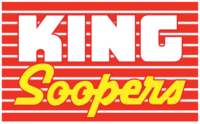
Case Study
Display Setup & Ongoing Retail Merchandising for Plush Toy Brand
0
Store Visits
0M
Products Placed
Challenge
Despite the brand’s popularity, they were incurring significant costs through the use of their own commissioned sales force.
The challenge they were facing was twofold:
- Cost Efficiency:
Maintaining a large network of sales agents was expensive and increasingly unnecessary given the brand’s self-selling nature.
- Sales Process Management:
The decentralized nature of the sales force made it difficult to manage and scale sales operations nationally with consistency and data-driven insights.
As a result of these challenges, the company needed a solution that would:
- Reduce operational costs
- Maintain or grow sales volume
- Centralize and modernize the sales process
Proposed Solution
They implemented a strategic shift in their Target Operating Model (TOM) by:
- Eliminating Commission-Based Sales Agents:
Phasing out the traditional sales network to cut costs.
- Partnering with CI for Retail Merchandising and Store Servicing:
CI provided a national framework for in-store retail merchandising and product servicing, replacing the need for individual sales agents.
- Leveraging Photo-Based Sales Intelligence:
During retail merchandising service visits, CI representatives captured photos of store shelves and displays. These images were analyzed to determine inventory needs and generate sales orders.
- Centralized Sales Management:
The new model allowed the brand to manage the sales process nationally, improving consistency, visibility, and responsiveness.
Outcome
The transformation yielded significant benefits:
- Cost Reduction:
Eliminating commissions and streamlining operations through CI led to substantial reduction in fixed costs.
- Profitability Increase:
With lower operating costs and sustained sales levels, the company experienced a marked improvement in profitability. -
- Increase in merch quality contributed to increase in sales, etc.
- Sales Stability & Growth:
Despite removing the commissioned sales force, the company maintained—and in some regions, grew—its sales volume, validating the strength of the brand and the effectiveness of the new model.
- Operational Efficiency:
The centralized model enabled better data collection, faster decision-making, and more agile inventory management.
Get started with Customer Impact
Step 1: Schedule a Call
We want to learn about you, your retail execution needs and business goals.
Step 2: Receive a Customized Project Scope
Our onboarding team will develop a strategic action plan based around your needs.
Step 3: Retail Execution
Your dedicated project team will take it from here, delivering flawless in-store retail execution.


